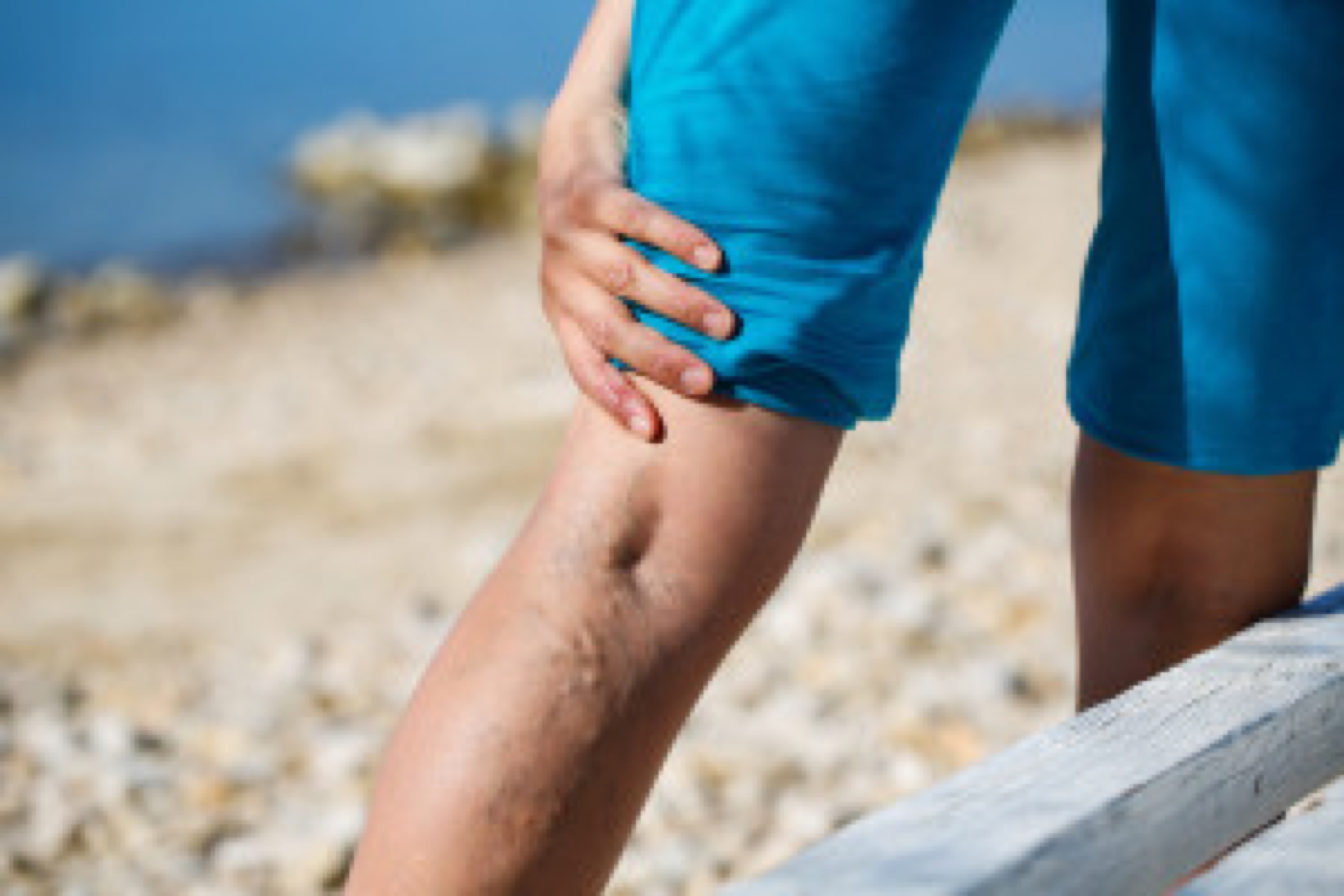Is Tattooing Your Legs a Solution to Cover Up Varicose Veins?
I went for a lovely walk along the beach today and I passed a woman who was heavily tattooed including some tattoos up and down her legs - and it got me thinking.
What a novel way to cover up varicose veins...
You and the tattoo artist could be very innovative in designing tattoos especially for that purpose depending on where the varicose veins were situated and how much they showed up in the first place.
There could be a serpent or a snake winding its way up in much the same way as the varicose vein itself or there could be a spider in a web for those spider veins. The possibilities are almost endless!
But enough joking about this rather serious subject
I suffered from varicose veins myself which only appeared in my 3rd pregnancy and so of course I always blame my daughter for these! Back in the 1980s, there were not many options for removing varicose veins and I went down the stripping and removing route and had to wear support stockings for several weeks afterwards.
It was quite a successful procedure as up until then I had endured some pain and discomfort and this all disappeared afterwards. But my legs were never the same again (from an appearance point of view) so I have to keep them tanned as much as possible as this definitely hides some of the evidence.
Varicose veins can be genetic, often becoming prominent as you age
These can aggravate the problem:- Prolonged standing
- Obesity or a distended belly
- Straining because of chronic constipation, urinary retention from an enlarged prostate, a chronic cough or any other conditions that cause you to strain for long periods of time as all of these can cause an increase in the forces transmitted to the leg veins and possibly resulting in varicose veins
- Previous surgery or other trauma to the leg which can interrupt the normal blood flow channels
- Ageing as many older people can show degrees of varicose veins
What are the options for those suffering from spider veins and varicose veins today?
Varicose veins and spider veins are treated with lifestyle changes and medical treatments to relieve symptoms; prevent complications; and improve appearance. Some of these treatments include:- Compression stockings are one option that put helpful pressure on your veins. The best kind to use are prescription-strength gradient compression hose, which offer the greatest amount of pressure. They are sold in medical supply and drug stores. You need to be fitted for them by someone who has been trained to do this.
- You have a natural option that works on both varicose veins and spider veins to reduce the swelling of the veins and improve the circulation so that gradually shrinkage of the veins will be complete. Formulated with pure essential oils, such a treatment is 100% safe for pregnant and nursing mothers too. This safe and gentle option is very cost effective.
For spider veins and even smaller varicose veins, there is:
- Sclerotherapy which involves injecting a chemical inside the vein that obliterates it. More than one treatment may be necessary. There can be complications in certain cases and bandages may have to remain in place for up to 3 weeks with the wearing of compression stockings recommended for some time after treatment. Sclerotherapy works well and successfully for most patients with veins. It is estimated that as many as fifty to eighty percent of injected veins may be eliminated with each injection session.
- In some cases, laser treatments can effectively treat spider veins and smaller varicose veins. This technique sends very strong bursts of light through the skin onto the vein. This makes the vein slowly fade and disappear. Not all skin types and colors can be safely treated with lasers. No needles or incisions are used, but the heat from the laser can be quite painful. Cooling helps reduce the pain. Laser treatments last for 15 to 20 minutes. Generally 2 to 5 treatments are needed to remove spider veins in the legs but you can return to normal activity right after treatment.
For larger varicose veins, there is:
- Endovascular laser therapy which is a new technique that uses a laser to destroy the vein. Usually performed in a doctor's office, the procedure takes about 30 to 45 minutes. The small laser is passed into the vein with guidance from the ultrasound machine. The laser is then fired up and the entire vein is fibrosed. The laser is used on several different locations and the entire procedure is performed with some local anesthesia. With this procedure, recovery is rapid and involves minimal pain. Except for some mild bruising and a numbing sensation, no other side effects have been noted.
- Radio frequency ablation is a similar technique to endovascular laser, but it uses heat to destroy the vein. The probe is placed in the vein under ultrasound and once in position, the vein is heated along the entire length. The procedure is performed under local anesthesia and takes about 30 minutes. It is also a relatively new procedure and so far, the short-term results have been excellent.
if varicose veins and spider veins are a problem for you, investigate the different options to help you decide what is the best way forward.
There is plenty of choice including the natural route
Sources:
How are varicose veins treated? (2014, February 13)
nhlbi.nih.gov/health/health-topics/topics/vv/treatment. (Accessed, Feb 15, 2021)
Joh, J. H., Kim, W.-S., Jung, I. M., Park, K.-H., Lee, T., Kang, J. M., & Consensus Working Group. (2014, December). Consensus for the treatment of varicose vein with radiofrequency ablation. Vascular Specialist International, 30(4), 105-112.
ncbi.nlm.nih.gov/pmc/articles/PMC4480318/. (Accessed, Feb 15, 2021).
Varicose veins and spider veins. (2017, January 4)
womenshealth.gov/a-z-topics/varicose-veins-and-spider-veins. (Accessed, Feb 15, 2021).






